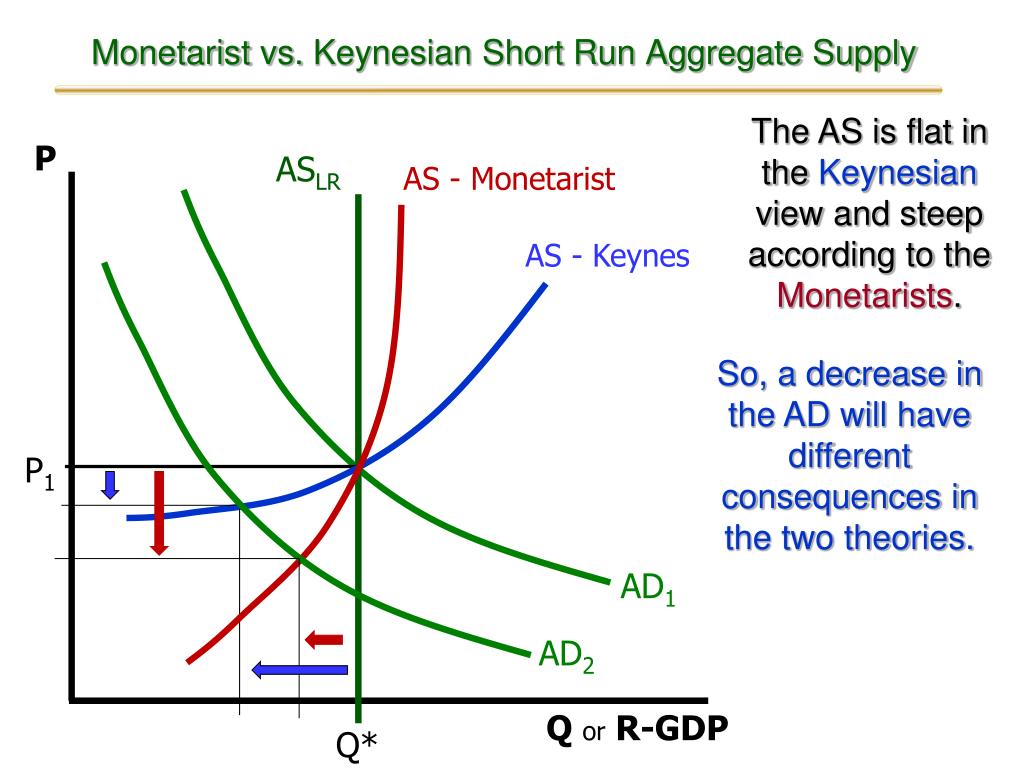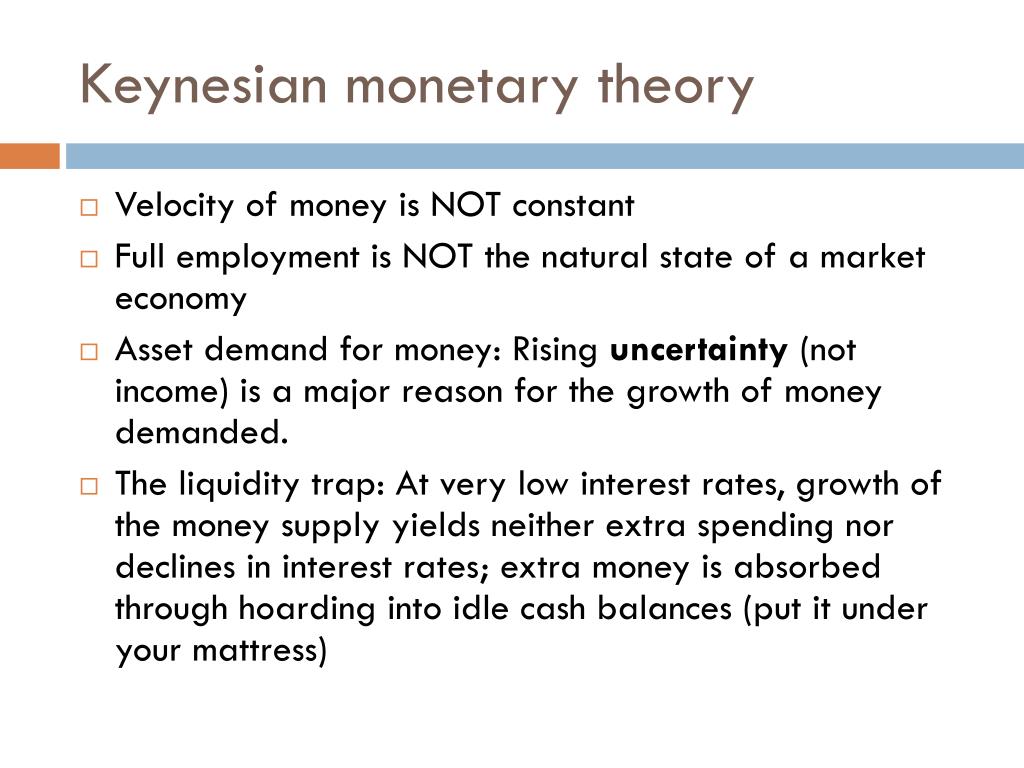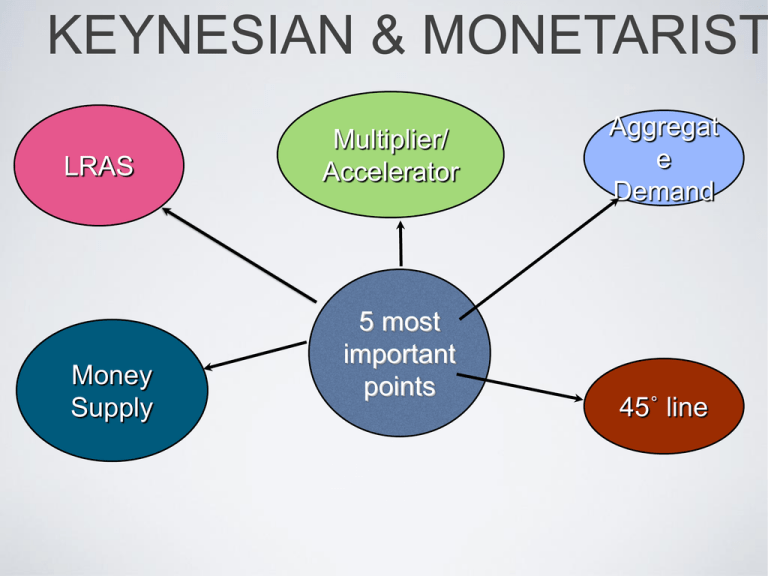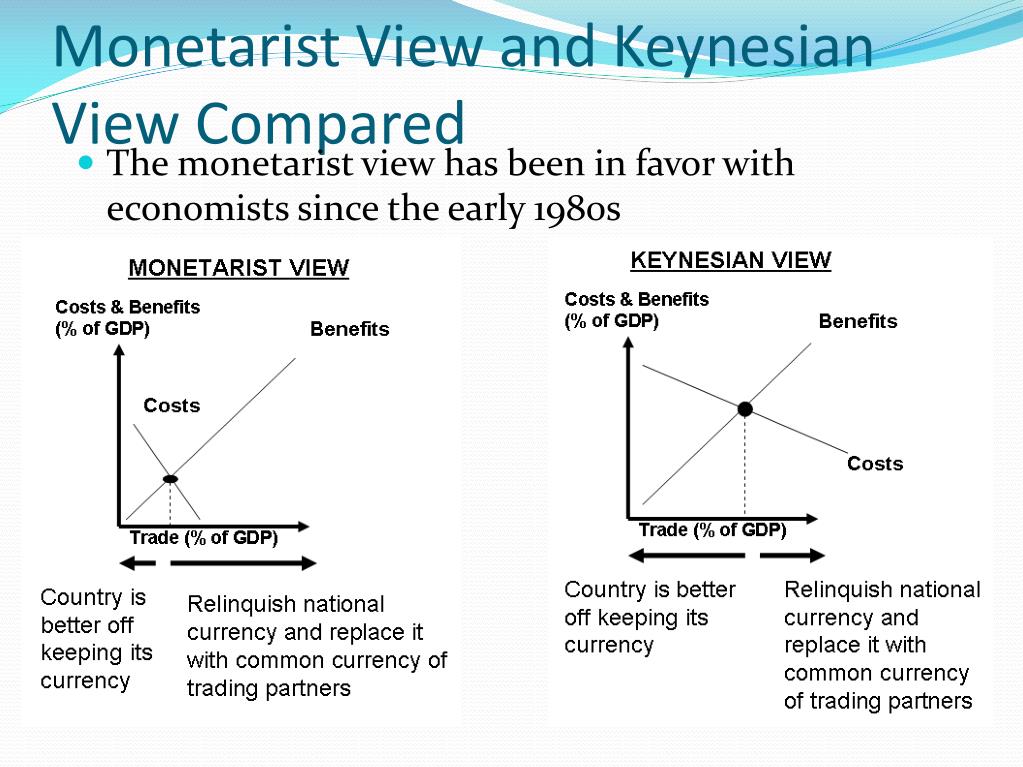
What are the key Differences between Keynesian vs Economics
When the decade began, Britain was the paradigmatic case of what has often been termed the Keynesian era. By the 1980s Britain was leading again but in a different direction.. The shift from Keynesian to monetarist modes of policy-making also provides an appropriate case for the kind of analysis we associate with historical institutionalism.

PPT Theory PowerPoint Presentation, free download ID5989310
Keynesian economics is an economic theory of total spending in the economy and its effects on output and inflation . Keynesian economics was developed by the British economist John Maynard Keynes.

PPT Keynesian economics PowerPoint Presentation, free download ID
Monetarism is a branch of Keynesian economics that emphasizes the use of monetary policy over fiscal policy to manage aggregate demand, contrary to most Keynesians.

Keynesian and Economics How Do They Differ? YouTube
Whereas Keynesians naively believe that government spending is a source of economic growth, monetarists in a similarly naïve way believe that money creation for the sake of it boosts the economy.

Keynes v Keynote
In short, Keynes, the Keynesians and Monetarism contends that monetarism defeated Keynesianism in the battle of ideas in the 1970s and 1980s. The achievement of greater macroeconomic stability in the last 15 years is largely due to the impact of monetarist thinking on policy-making.

PPT Theory PowerPoint Presentation, free download ID5989310
The distinction between Keynesian and monetarists positions is a bit more blurred. For example, many 'Keynesian' economists have taken on board ideas of a natural rate of unemployment, in addition to demand deficient unemployment. 'New Classical' economists are more likely to accept ideas of rigidities in prices and wages. Related

PPT Benefits of a Common Currency PowerPoint Presentation, free
The primary difference between Monetarism and Keynesianism stems from the widely different views on the authority and means for maintaining economic stability in a nation. Monetarism revolves around the inflow of money into the economy, while Keynesianism advocates control over the demand for goods and services.

CHAPTER 5 Theory and Policy Chapter Objectives
Nominal GDP rose only 0.3 percent in the first quarter. Since money growth plus velocity growth equals nominal GDP growth, M2 velocity must have declined by 6.6 percent. So a 6.9 percent growth in.

and Keynesian comparison part 1 theory upsc
The article analyzes two approaches to developing economic policy, Keynesian and monetarist. The main ideas of J. Keynes and M. Friedman and their applicability as the basis for designing an anticrisis economic policy are considered in a historical context.

keynesianism vs
The Monetarists versus the Keynesians: There are conflicting views on the mechanism as to how money supply affects the general economic activities or income level. On the one hand, some theorists put the emphasis on a direct relation between the money supply and expenditure.

Banking crisis v keynesian YouTube
12 - Keynesians versus monetarists Published online by Cambridge University Press: 10 December 2009 Mark Blaug Chapter Get access Cite Summary Fruitless debate? In taking up this topic, we go to the heart of the furious controversies that have surrounded questions of macroeconomic policy in recent years.
:max_bytes(150000):strip_icc()/Term-Definitions_keynesianeconomics1-74a7c574f11345c1b4a2cff2db8065dd.jpg)
Keynesian Economics Theory Definition and How It's Used
The key difference at the core of both theories is that Monetarists do not think that government spending is the best path to economic stability. Instead, they emphasize inflation. Keynesian and.

PPT Benefits of a Common Currency PowerPoint Presentation, free
Currently, Keynesians are supposed to be the advocates of lax monetary policy, while Monetarists propagate a return to normality. The controversy between Keynesianism and Monetarism, however, is a counter-productive frame for the current debate.

Keynesians Vs YouTube
Learn about the comparison between Monetarism and Keynesian Approaches. In essence, monetarists say, "only money matters for aggregate demand"; Keynesians reply, "Money matters but so does fiscal policy". See Fig. 14.2, which is self-explanatory. A second difference revolves around aggregate supply. Keynesian economics stresses that the AS curve is relatively flat. If prices and wages are.

KEYNESIAN ECONOMICS Vs ECONOMICS MACROECONOMICS LEARN
Simply put, the difference between these theories is that monetarist economics involves the control of money in the economy, while Keynesian economics involves government expenditures..

keynesianism vs
Keynesian economic theory is a macroeconomic theory that is related to total spending in the economy and its effects on output, employment, and inflation. This theory focuses on the changes within the economy over the short run. According to this theory, government intervention can strengthen the economy. Features of Keynesian Theory